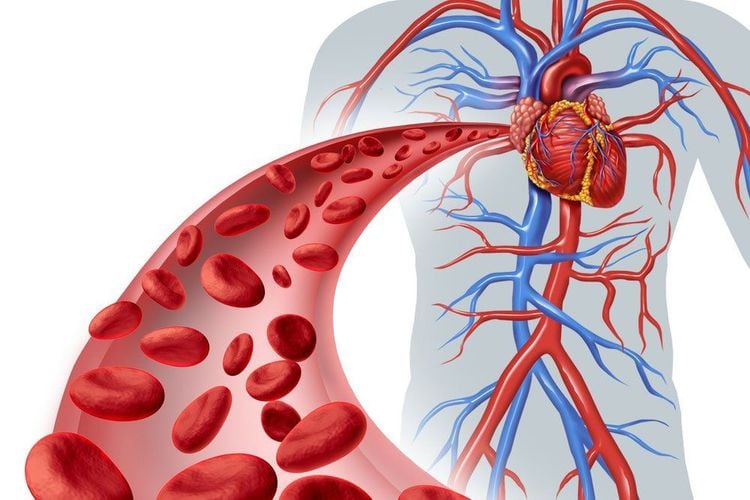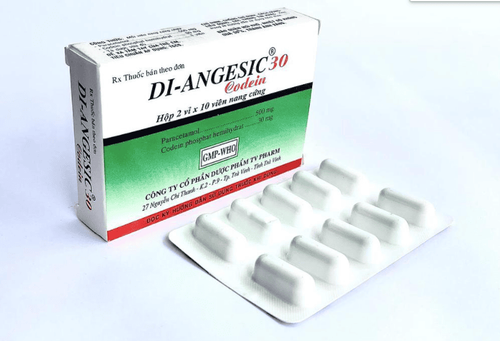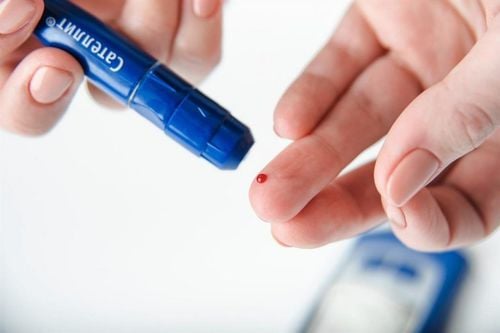This is an automatically translated article.
The article was professionally consulted with Doctor Department of Emergency Resuscitation - Vinmec Hai Phong International General Hospital.
Respiratory acidosis is a common disease in people with lung diseases such as obstructive disease, circulatory diseases. Respiratory acidosis affects the functioning of the brain, musculoskeletal system such as arms and legs, .. People with respiratory acidosis have some manifestations such as headache, sleep disturbance, lethargy, and lethargy. Dreams, confusion, muscle twitching, possible drooping hands (asterixis), followed by coma.
1. Definition of respiratory acidosis
Respiratory acidosis is a form of acidosis (ACID-BASE balance disorder), which occurs when too much CO2 builds up in the body. Normally, the lungs will have the function of removing CO2 while breathing. Sometimes, for some reason, the body cannot excrete enough CO2, causing CO2 in the body to increase, leading to an increase in H2CO3, increasing the pH of the blood.
Respiratory acidosis has two forms: acute respiratory acidosis and chronic respiratory acidosis. Distinguish between the above two types based on the degree of elevation of HCO3 levels:
Acute respiratory acidosis is often a secondary disease due to acute respiratory failure. Consequences of undetected acute respiratory failure include marked hypoxia, hyperkalemia, cardiovascular instability, and cardiac arrest. The disease has manifestations of lethargy, confusion, muscle twitching, may experience signs of drooping hands (asterixis), followed by coma. Severe hypercapnia will increase cerebral blood flow, increase cerebrospinal fluid pressure, and may present with signs of increased intracranial pressure (papilloedema, pseudotumor brain syndrome).
Chronic respiratory acidosis is common in people with lung diseases such as chronic obstructive pulmonary disease. The kidneys excrete acid in the form of Cl- and NH4- ions, causing hypochloremia characteristic of chronic respiratory acidosis. When correcting chronic respiratory acidosis too quickly, especially when the patient is on mechanical ventilation, it takes about 2 to 3 days for the kidneys to excrete bicarbonate, so there will be metabolic alkalosis after hypercapnia.
2. Causes of respiratory acidosis

Due to a decrease in CO2 excretion in the lungs. Respiratory acidosis is an elevation of the blood PaCO2 with or without an elevation of HCO3-, the pH is usually low but may be near normal.
There are many causes of respiratory acidosis but there are 3 main causes of respiratory acidosis, including:
One is, due to central nervous system depression (anesthetics, sleeping pills, infections). , brain damage): these nerves are no longer as sensitive to CO2 as they are normally to be eliminated in time. Patients have mental instability such as: pain, struggle, crying, anxiety, .... Second, circulatory disease reduces the ability to transport blood to the lungs, causing blood stasis in the lungs. general venous system such as right heart failure, total heart failure; neuromuscular diseases (myopathy, Guillain-Barre syndrome). Third, the cause of alveolar hypoventilation (inadequate ventilation) can be in the lungs or outside the lungs, leading to lung diseases: bronchial asthma, restrictive lung disease, severe pneumonia... In infection respiratory acidosis, the buffering system, the lungs, and the kidneys attempt to re-establish balance. Besides, there are other causes such as: hypoxemia: living in the highlands, severe anemia, pregnancy, hyperthyroidism, cirrhosis of the liver. Over-correction of chronic metabolic acidosis can also lead to respiratory alkalosis because the nervous system acidosis is corrected more slowly and over a longer period of time, continuously causing hyperventilation.
3. Treatment of respiratory acidosis

After examining and determining the condition, doctors usually treat respiratory acidosis by intravenous injection of naloxone (0.04 - 2 mg), if no obvious cause is found. Treatment is mainly focused on treating the underlying cause to improve ventilation. Give the patient medications that dilate the airways. Use machine tools to assist with oxygen delivery or continuous positive pressure breathing (CPAP). CPAP can help patients breathe if they have airway obstruction or muscle weakness.
In addition to the acidosis treatment measures given by doctors, patients also need to be proactive and active in treatment coordination. Specifically, building a suitable lifestyle, creating healthy living habits. Use prescription tranquilizers and absolutely do not drink with alcohol.
For patients who smoke, pipe tobacco should be quit as soon as possible, as smoking can damage the lungs and make breathing less efficient. It is important to maintain a healthy weight because obesity can make it harder for you to breathe, drink lots of water. Stop drinking alcohol because long-term alcohol consumption can increase the accumulation of lactic acid.
4. How to manage respiratory acidosis?
Respiratory acidosis due to different causes that have different specific manifestations, but all need to have methods to manage respiratory acidosis to reduce the unfortunate consequences that may occur.
When encountering a comatose patient, place the victim on his or her back, with the head lower than the feet, if the victim is still breathing and try to raise the legs up about 30cm, above heart level. Loosen belts, collars and tight areas of clothing. Check victim's breathing, start CPR if not breathing, continue CPR until ambulance arrives or victim starts breathing again. It is necessary to call an emergency immediately so that the patient can go to the hospital to see a doctor as quickly as possible, promptly use supportive tools such as a ventilator, ...
With milder manifestations (when the patient is known). patients with a history of respiratory acidosis) can use sodium bicarbonate (baking soda) to raise the pH of the blood. You can take it by mouth or by intravenous drip.
Please dial HOTLINE for more information or register for an appointment HERE. Download MyVinmec app to make appointments faster and to manage your bookings easily.













